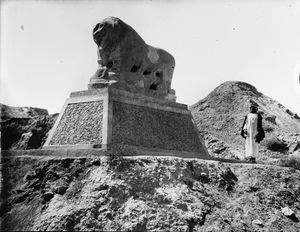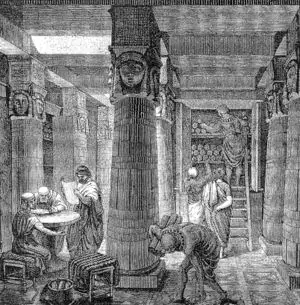Why did museums develop
Today we think of museums as areas that display the past, our culture, or natural history of our world. This certainly has developed to be the modern norm; however, when museums first developed they were for the private display of monarchs, showing war trophies and past societies. This evolution went further development in the Renaissance and Enlightenment, with the rise of intellectual wonder and development of social education.
Early Developments
The world's first museum known to us appears to be from Babylon, now in southern Iraq, found within the palace of king Nebuchadnezzar, the well known king who sacked Jerusalem in the Bible (Figure 1). Although some scholars claim the title of the first museum should be in the city of Ur, in the temple of Ennigaldi-Nanna, which did house ancient collections, this structure may date to a slightly later time than that of Nebuchadnezzar's displays. During the Neo-Babylonian period (626-539 BC), there was interest in both the distant past, which by that time Mesopotamian urban complex societies were nearly 3000 years old, as well as capturing war booty from within the Empire as it expanded. In essence, the concept of the museum as a display of the origin of a people as well as of its power was developed. Early museum collections included ancient tablets, statues, and religious relics that would have been seen as continuing to have important relevance. The importance and continuity of ancient religion, in fact, was another motivation to develop museums, in this case within temple complexes.
Origin of the Word
The origin of the word museum derives from the Musaeum that once stood in ancient Alexandria in Egypt from around 300 BC and lasted as an institution through the Roman period. This original structure once contained the famous library of Alexandria. While many ancient works, in particular writings, were collected in this institution, its core focus was on education and research. Lectures, presentations, and teaching were conducted here during the Ptolemaic and Roman eras. In essence, it was an institution that became comparable to our modern concepts of universities. Therefore, museums became places of education and research and not simply places that housed ancient objects. Utilizing the knowledge of the past, including from very distant cultures, became one of the key missions of the Musaeum. This is similar in concept to our modern research museums that both display ancient objects but also conduct scientific research.

